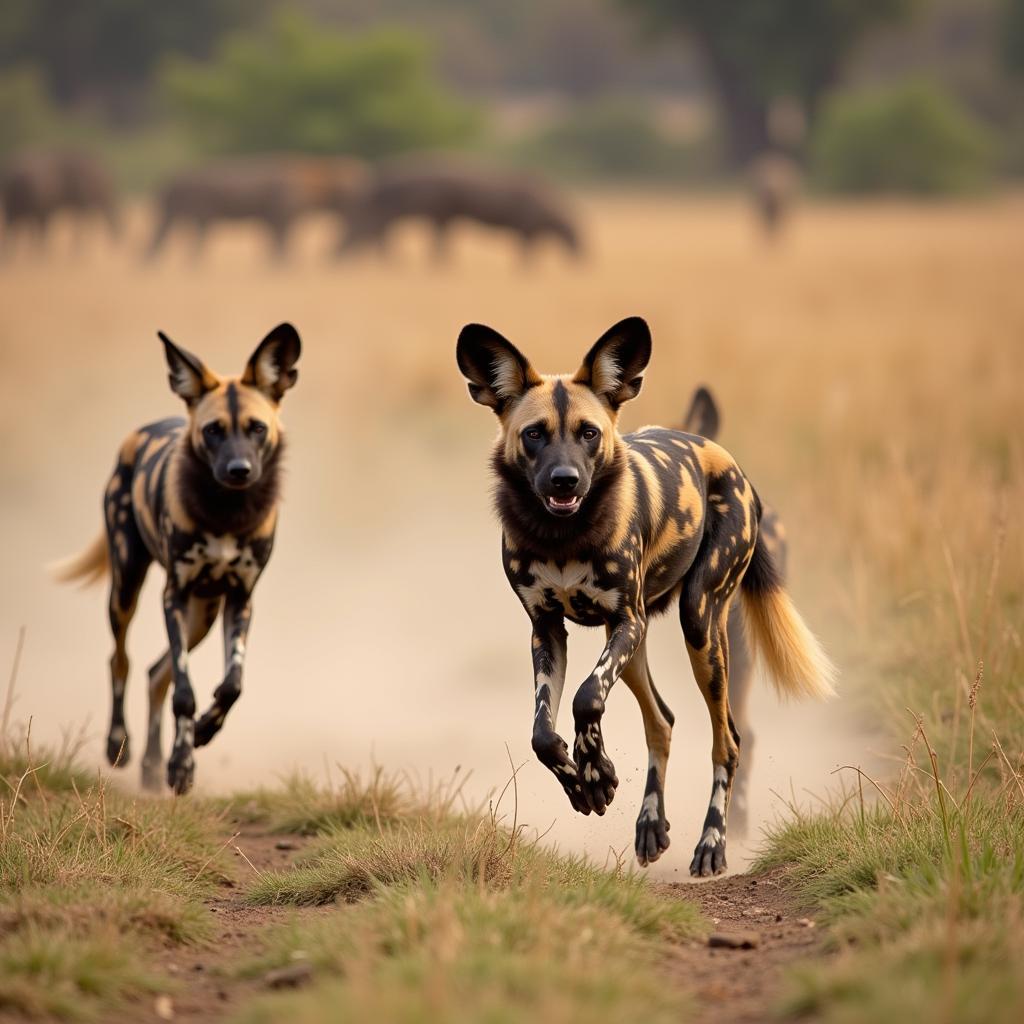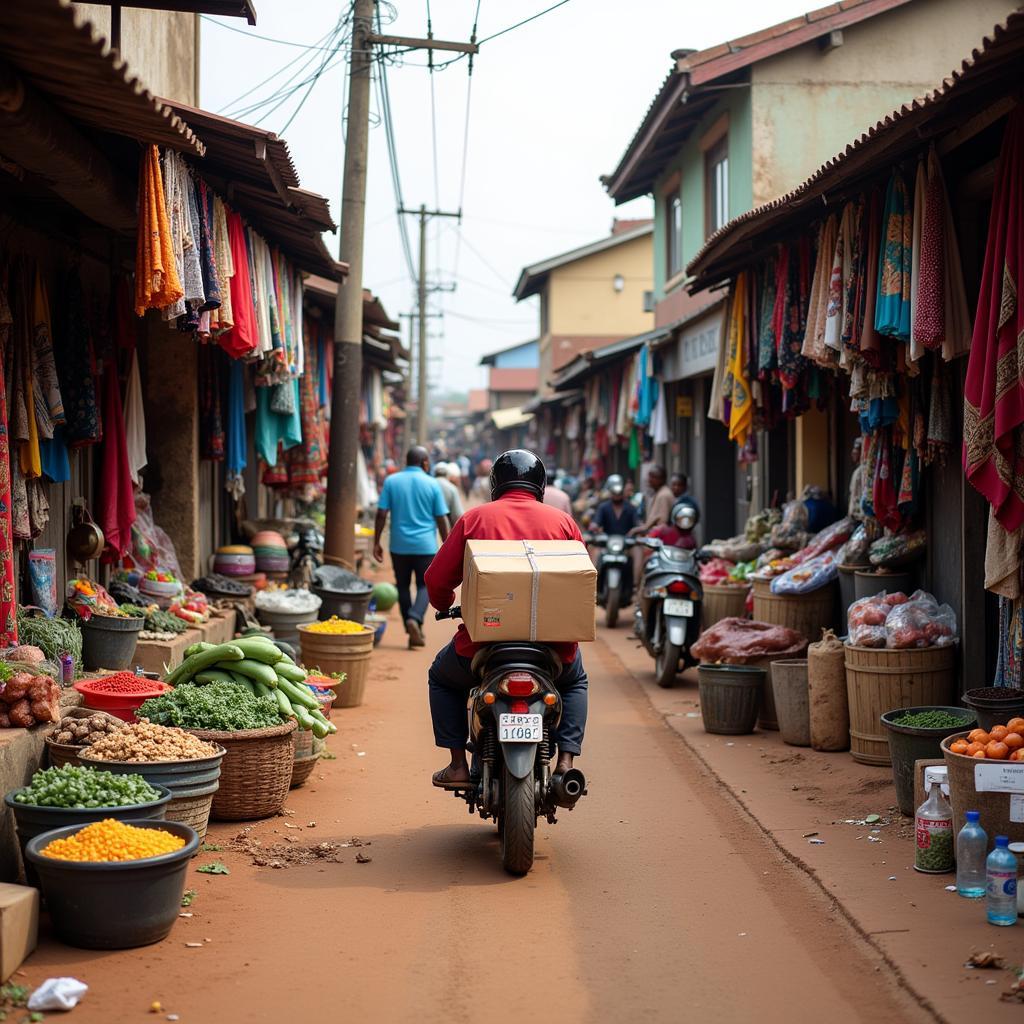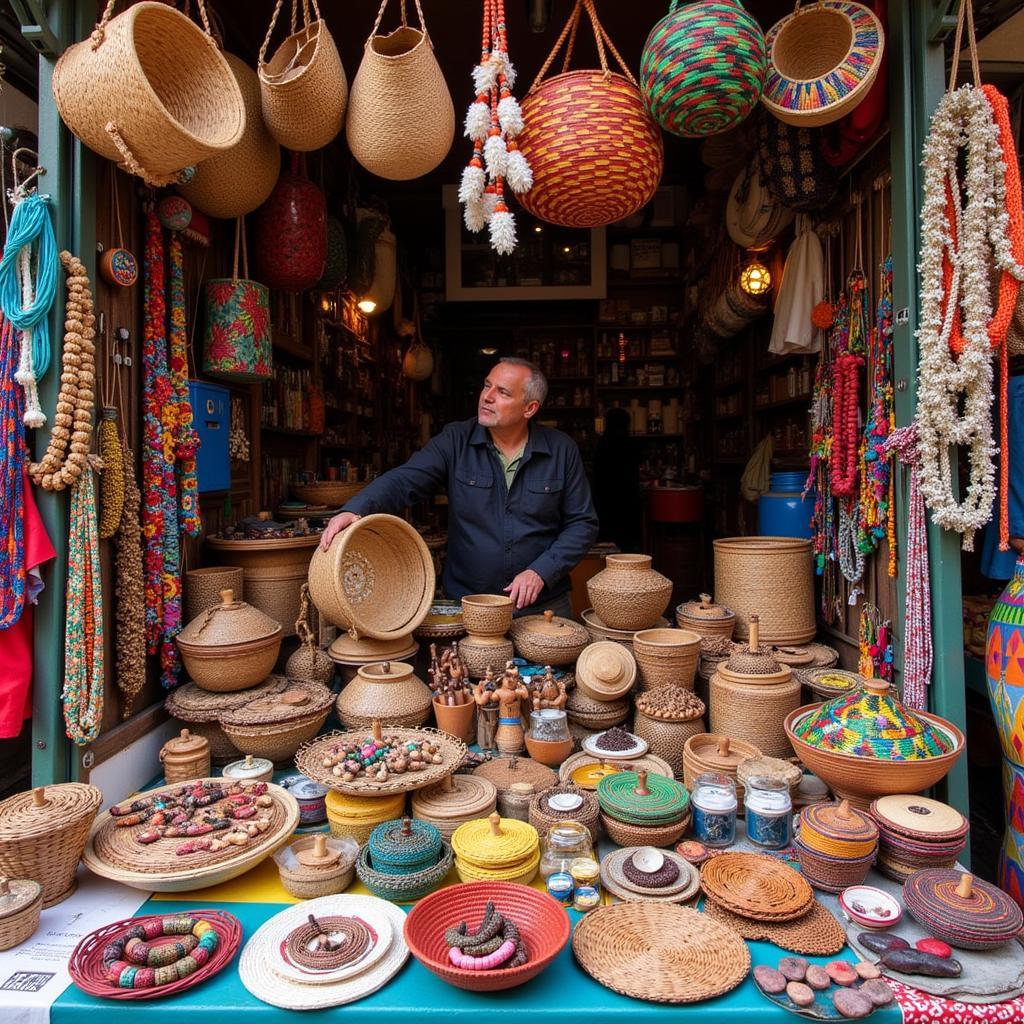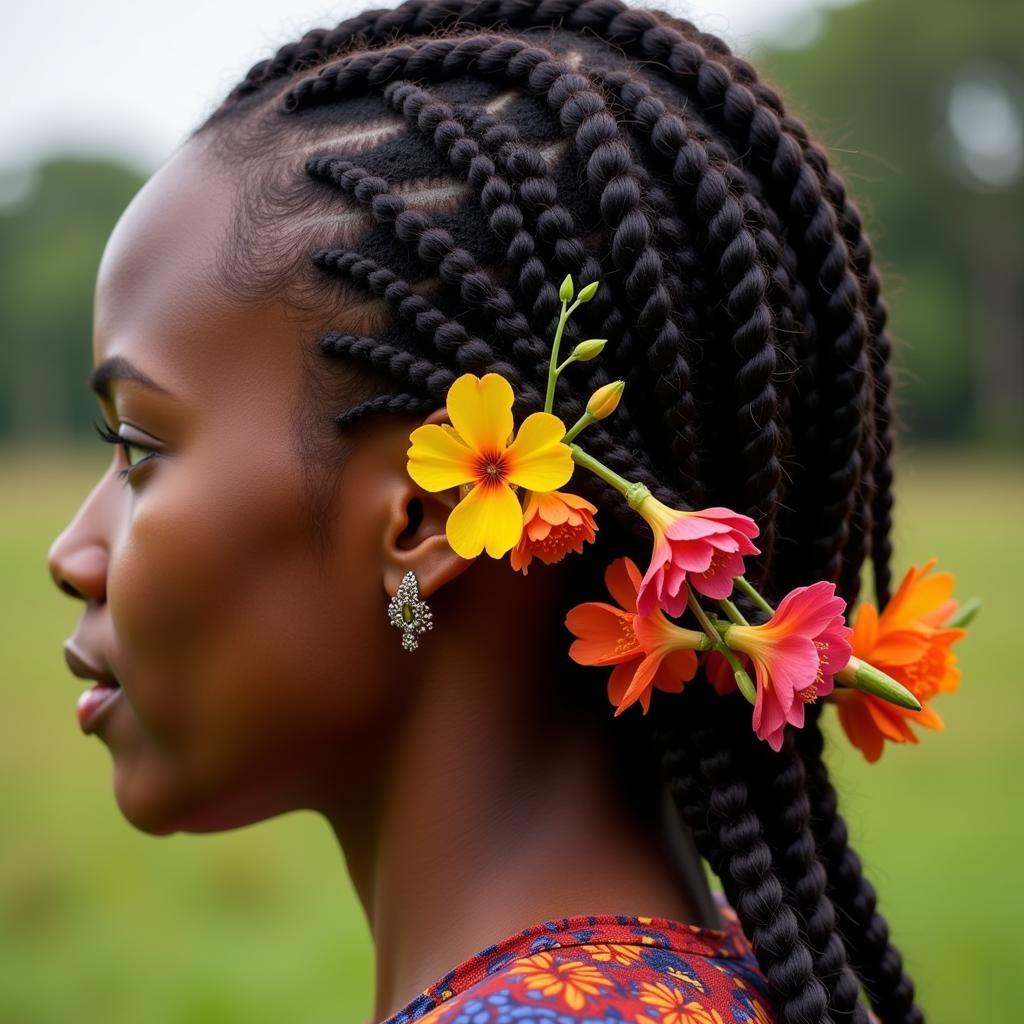Exploring the Diversity of African Ethnic Tribes
Africa, a continent renowned for its rich tapestry of cultures and traditions, is home to a vast array of ethnic tribes. Each tribe possesses its own unique customs, languages, beliefs, and art forms, contributing to the continent’s incredible diversity. This exploration delves into the fascinating world of African Ethnic Tribes, shedding light on their cultural practices, historical significance, and the challenges they face in the modern era.
A Continent of Many Tongues: Linguistic Diversity Among African Tribes
With over 2,000 languages spoken across its expanse, Africa boasts unparalleled linguistic diversity. Ethnic tribes, often geographically concentrated, have developed and preserved distinct languages, serving as vital markers of their identity. For instance, the Berber tribes of North Africa maintain their own languages, such as Tamazight, which has distinct dialects spoken across Morocco, Algeria, and other countries. Similarly, the Khoisan languages of Southern Africa, characterized by unique click consonants, are spoken by the San and other indigenous groups.
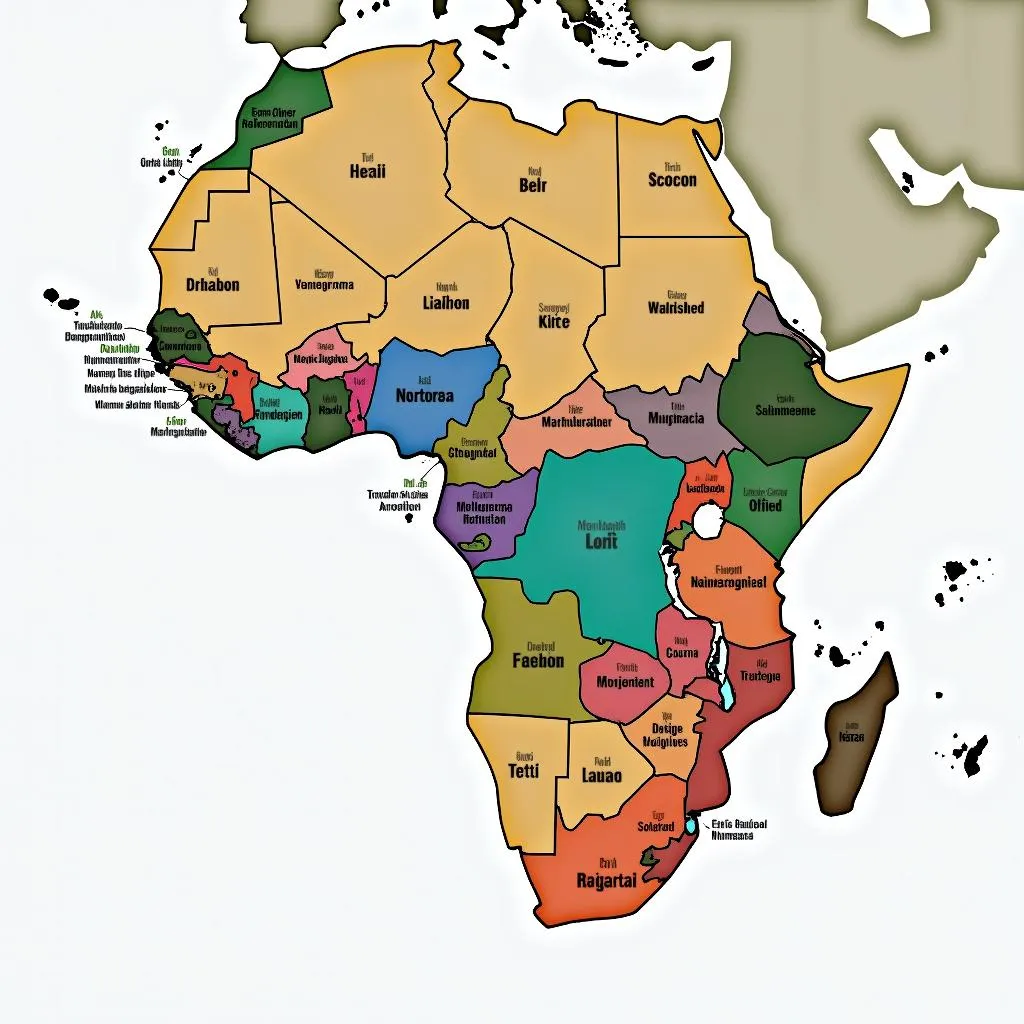 Map of language families in Africa
Map of language families in Africa
These languages are not merely tools of communication; they are repositories of cultural knowledge, history, and traditions. Oral storytelling, an integral part of many African cultures, thrives on the nuances and expressions unique to these languages. Proverbs, riddles, and folktales, passed down through generations, embody the values, beliefs, and worldview of each tribe.
Beyond the Mask: Unveiling the Cultural Richness of African Tribes
The cultural expressions of African tribes are as diverse as the languages they speak. From intricate beadwork and vibrant textiles to captivating music and dance forms, each tribe showcases its unique artistic heritage.
Adorning the Body, Expressing Identity
For many African tribes, clothing and adornment extend beyond mere aesthetics, serving as powerful symbols of identity, status, and beliefs. The Maasai of East Africa, known for their striking red shukas (robes), use elaborate beadwork to signify age, marital status, and social standing. Similarly, the Yoruba people of West Africa are renowned for their intricate weaving techniques, producing colorful aso oke fabrics used in traditional ceremonies and festivals.
Rhythms of Life: Music and Dance as Cultural Pillars
Music and dance are not mere forms of entertainment but integral elements of cultural expression and social cohesion within African tribes. The rhythmic drumming and energetic dances of the Zulu tribe in South Africa, often performed during ceremonies and celebrations, are a testament to their vibrant heritage. The hypnotic melodies of the kora, a 21-stringed West African harp, played by the Mandinka people, accompany tales of ancient heroes and kings, preserving history through music.
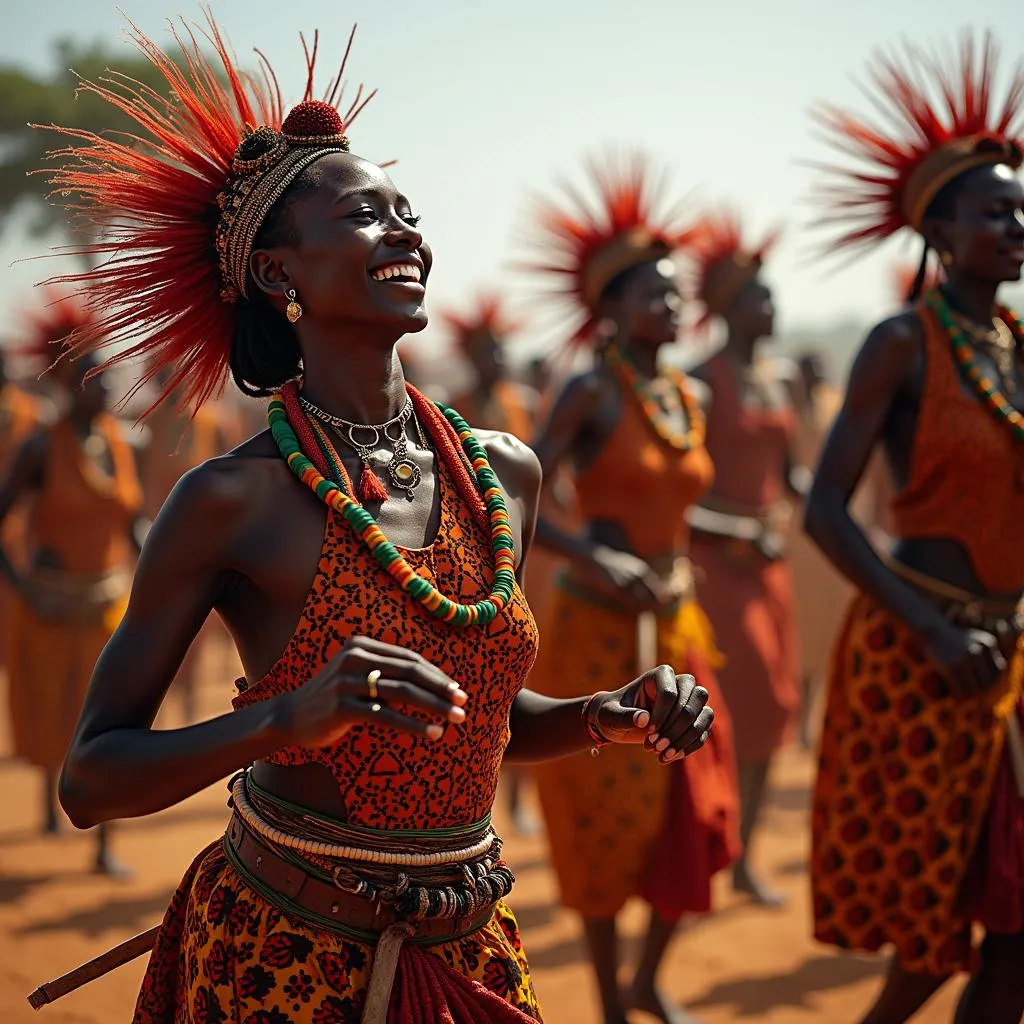 A group of African dancers in traditional attire, moving rhythmically to the beat of drums.
A group of African dancers in traditional attire, moving rhythmically to the beat of drums.
Navigating the Modern World: Challenges and Resilience of African Tribes
In an era of globalization and rapid societal changes, African ethnic tribes face numerous challenges to preserving their cultural identity. Modernization, urbanization, and the influence of external cultures pose threats to traditional ways of life.
Land Rights and Cultural Preservation
For many tribes, especially those with deep-rooted connections to their ancestral lands, securing land rights is paramount to preserving their cultural heritage. The San people of Southern Africa, for instance, have faced ongoing struggles to protect their ancestral territories and maintain their traditional hunter-gatherer lifestyle.
Bridging the Gap: Education and Economic Empowerment
Access to education and economic opportunities is crucial for the well-being of African tribes. By empowering individuals with knowledge and skills, communities can adapt to the changing world while preserving their cultural heritage. Initiatives that promote sustainable tourism, for instance, can provide economic opportunities while showcasing and celebrating the unique traditions of local tribes.
A Tapestry of Traditions: Honoring the Legacy of African Ethnic Tribes
The diverse ethnic tribes of Africa represent a rich tapestry of cultures, languages, and traditions that have shaped the continent’s history and identity. Understanding and appreciating their unique heritage is essential not only for celebrating Africa’s cultural wealth but also for fostering inclusivity and respect in a globalized world.
Frequently Asked Questions About African Ethnic Tribes
1. How many ethnic groups are there in Africa?
While precise numbers are difficult to determine, estimates suggest over 3,000 distinct ethnic groups reside in Africa.
2. What are some of the largest ethnic groups in Africa?
Some of the largest ethnic groups include the Yoruba, Igbo, and Hausa in West Africa; the Zulu and Xhosa in South Africa; and the Oromo and Amhara in East Africa.
3. Do all African tribes speak different languages?
While many tribes have their own languages, there are also shared languages spoken across various groups, often with regional dialects.
4. How are African tribes adapting to modern life?
Tribes are adapting in diverse ways, from engaging in sustainable tourism to pursuing higher education and advocating for land rights.
5. How can I learn more about specific African tribes?
Numerous online resources, documentaries, and books offer insights into the history, culture, and contemporary lives of African ethnic tribes.
For further assistance, please reach out to us at:
Phone Number: +255768904061
Email: kaka.mag@gmail.com
Or visit us at: Mbarali DC Mawindi, Kangaga, Tanzania.
Our customer service team is available 24/7 to assist you.


